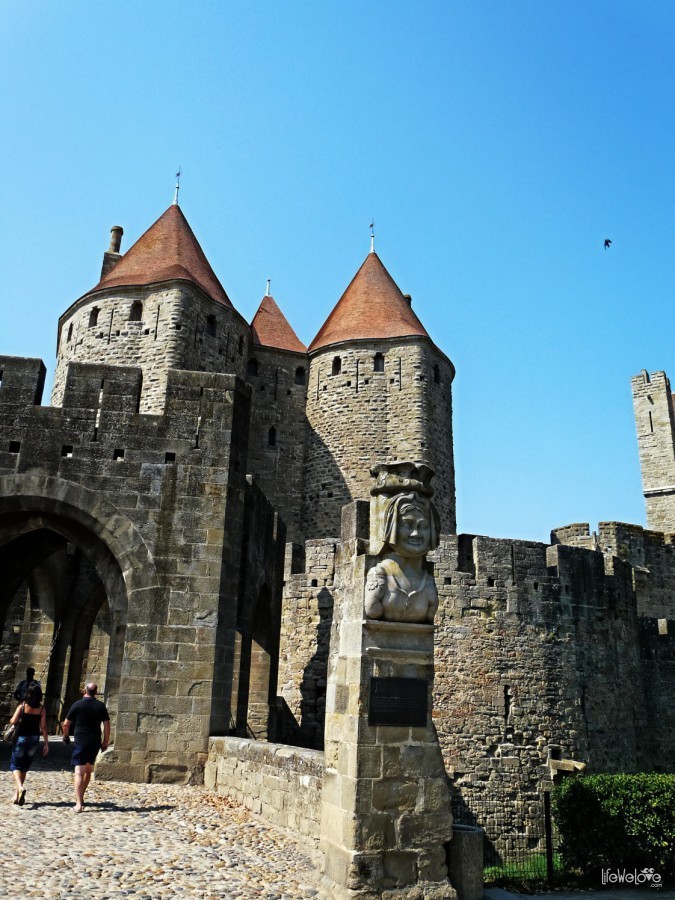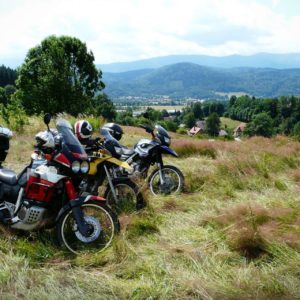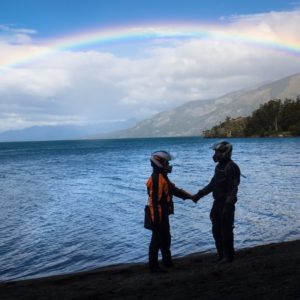There is a reason why the Carcassonne fortress is visited by some millions of tourists. For the fans of castles and medieval fortresses, it is a real treaty on a world scale. Grown up on the Silesian castles, we couldn’t omit this place during our trip through the western Europe and not to drop in the biggest and perfectly kept medieval fortress in Europe. Its foundations date back to antiquity. Although it seemed to remain unconquered forever, in the 19th century it was dismantled to the last stone.

Located in the southern France, Carcassonne town is divided into the lower town (La Ville Basse) and upper town (Cite) and acknowledged as the greatest medieval urban complex in Europe fully kept. The upper town is guarded with double defensive walls long for about 1200 m and 53 towers. Inside, it is possible to visit the count’s castle from 12th century and Saint-Nazaire cathedral, built much earlier because in 11th century. The hugeness of the fortress, located on the hill is visible from distant. There are some sights along the route from the northern side of the castle. Some French man, who provided us with accommodation, showed us one of these sights for photographing. You can find it on the map below.
loading map - please wait...
| Parking for motorcycles Carcassonne, France | |
| View point on the Carcassonne fortress Carcassonne, France | |
| Carcassone Fortress Carcassonne, France | |
The history of this castle dates back the Gaul-Romanian age and already in 6th century B.C. here was a defensive estate, which Romans conquered just in the first century before Christ reinforcing it with the first fortresses. In 5th century, the Visigoths seized the town, and who extended the fortress by building the defensive walls, standing in Carcassonne till nowadays. Frankish Kingdom was trying many times to conquer the fortress, but without success. Finally, the Saracens managed to do it just in 8th century, who had been there for 35 years and after that time the town was recaptured by the Franks.
The 13th century brought the town with the connection to the French Crown, fortification of the count’s castle and reinforcement of the defensive walls, thanks to which it became the fortress impossible to conquer. The proof for that was the Hundred Year’s War between England and France during which the English troops of Prince Edward didn’t manage to conquer it. However, the lower town was demolished, which was re-built very fast and became very important centre of trade and textiles production. In the half of the 17th century, the fortress started to fall into ruin because of the technological progress of the armed forces and reallocation of the French-Spanish border. In 19th century, damages were so serious that the French government decided to dismantle the fortress. Luckily, Jean Pierre Cros-Mayreville, the historian, and Prosper Merimee, writer, stood up for the town-castle. The funds for the renovation were found and the conservation works lasted till 1911 and thanks to it, we can admire the Carcassonne fortress, the same way as it used to be in the past.
Inside, the fortress vibrant with life, on the narrow alleys, the crowds of tourists get through visiting the shops with sweets and souvenirs and restaurants. Such huge amount of tourists can overwhelm, but it probably reflects the life in the Medieval times when in 12th century, there were about 4 thousands dwellers were living inside the town walls.
Visiting the fortress is free and it can be entered by one of the four gates. The entrance to the count’s castle is paid and costs 10 Euro. In front of the entrance, there are some car parks, we found even one free for motorcycles. Carcassonne is available for tourist both, in day and at night, when the climate is more mysterious. In the holiday season, a lot of different festivals, concerts and knight’s tournaments are organized.
The Carcassonne fortress inspired a lot of film/movie makers, because a lot of known or less known films/movies were shot there. The title, such as ‘Robin Hood: The Prince of Thieves’ with Kevin Costner is known by almost everyone, the shooting was there, in the walls of Carcassonne castle. Apparently, Walt Disney was inspired by this place while producing the ‘Sleeping Beauty’.






































Jeff
Well done you 2 for giving a insight to the Castle and some of its history. Visiting it again in May such a lovely place. Merci beaucou
Joki
Merci :)